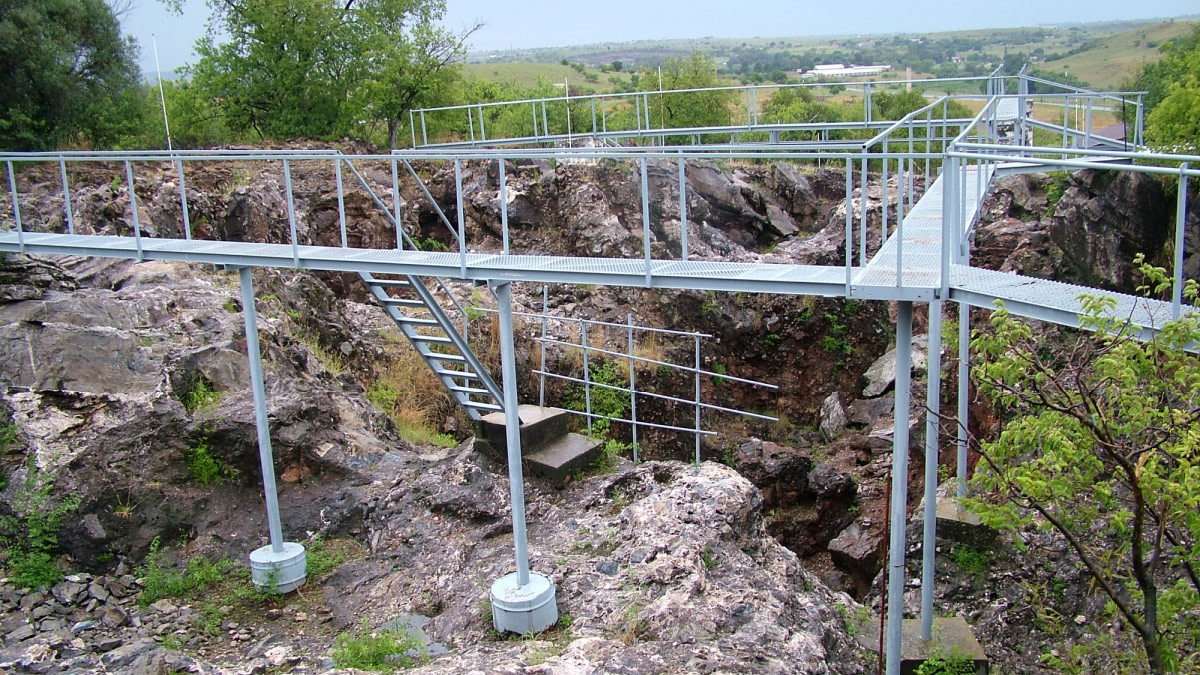
A new study out of South Africa could rewrite certain aspects of humankind’s evolutionary origin story.
The study hinges on an innovative fossil aging technique called cosmogenic nuclide dating. It shows that the fossil record of an early human-like hominid called Australopithecus africanus stretches back 3.8 million years, making the species one million years older than previously thought.
The findings, published in the journal PNAS, are significant because they show Australopithecus africanus is just as old as a different hominid species called Australopithecus afarensis.
Au. afarensis was a type of bipedal hominin common to east Africa. The first skeleton of this species was unearthed in 1974 and is now known as the famous Lucy skeleton.
Since paleoanthropologist Donald Johannson exhumed Lucy’s remains, many scientists have pointed to the remains as the primary intermediary between modern-day humans and our ancient primate cousins. But these new findings make it harder to say, with any degree of certainty, that human beings evolved directly from Lucy’s species.
“We found that Australopithecus africanus is in the same age range as Australopithecus afarensis, which is Lucy’s species in east Africa,” the study’s lead author Dr. Darryl Granger told MeatEater. “Lucy’s species started showing up at about the same time, about 3.8 million years ago, but Lucy herself is 3.2 million years old, so these fossils we’ve dated are older than Lucy herself but not older than her species.”
According to Granger, the two species of ancient bipedal hominids are contemporaries, meaning they emerged and existed around the same time.
“People used to think about the [human family] tree as being very linear, meaning one species leads to another,” Granger said. “One of the traditional views is that Lucy’s species, afarensis, evolved into africanus in South Africa, but that can’t happen because they’re the same age. They both have an older common ancestor, and they both showed up around the same time.”
Granger has been working in Sterkfontein, South Africa—a complex cave site known for its high concentration of Au. africanus remains—on and off since the early 2000s. Around 2003, he started to suspect that the fossils there were much older than most anthropologists believed.
Before Granger made his discovery, the Au. africanus fossils of Sterkfontein were dated at only 2.1 to 2.6 million years old. That would have put them on the earth at the same time as the genus homo, which emerged around 2.8 million years ago. As a result, Au. africanus was ruled out as an early precursor to modern humans.
That narrative is shifting now, thanks largely to Granger’s work, which relied on the more up-to-date cosmogenic nuclide dating method.
The method measures the amount of cosmic ray exposure in the sedimentary matrix that surrounds the Au. africanus fossils of Sterkfontein.
Cosmic rays originate in outer space, and they leave a traceable imprint on the earth's surface when they interact with certain elements. Once the remains of Au. africanus and the surrounding sediment were buried deep within the Sterkfontein cave complex they were no longer being exposed to cosmic rays. Granger and his team have determined the point when that cosmic ray exposure ceased, thus assigning the new age to Sterkfontein’s Au. africanus fossils.
“You can think about the cosmogenic nuclides kind of like a sun tan,” Granger said. “The longer you’re exposed, the darker you get. And then if you go inside and stay inside for months, your tan fades away. The same thing happens to these rocks if they get washed into a cave. Whatever they built up at the surface decays away by radioactivity, so you can see how much is left after they’ve been buried and figure out how long they’ve been in a cave.”
While Granger’s work updates our understanding of the age and origin of the Au. africanus species—and increases the likelihood that africanus is in fact one of our earliest ancestors—it doesn’t change what we know about the bipedal hominid’s day-to-day life.
According to Granger, the species wasn’t known for using stone tools. While it may have relied on insects and small animals to supplement a fruit, root, and grass-heavy diet, africanus didn’t eat meat on a regular basis or engage in organized hunting.
“They would have been eating a lot of different things that were around in their environment but mostly plants,” he said. “The big transition to relying on meat and marrow was later, when you see the transition from australopithecus to homo. That’s when the brains expanded, and you started seeing stone tools probably used for processing animal carcasses, for getting at bone marrow inside the bones, which is really energy-rich.”
The evolution from australopithecus to homo, and the corresponding leap in brain size, was driven by the adoption of meat-rich diets, Granger said. Compared to human brains, the brains of the australopiths were relatively small—more akin to that of a modern chimpanzee.
As for his most recent finding, Granger said that much of the feedback he’s received so far has been supportive. But because the study is still so new and its implications so significant, he’s anticipating some criticism and resistance from the broader scientific community.
“I’ve been working in Sterkfontein before, and there’s been some resistance to earlier aging from deeper in the cave. People can come up with scenarios where you’ve got young fossils in old sediment, but that doesn’t work here,” he said. “This paper, in a way, is a response to that resistance, and it’s reinforcing the idea that these [South African] australopithecines are old. I welcome criticism and other people working at the site. That’s the way science happens. We all try to poke holes in each other’s work. It’s part of the process. We’ll wait and see.”





